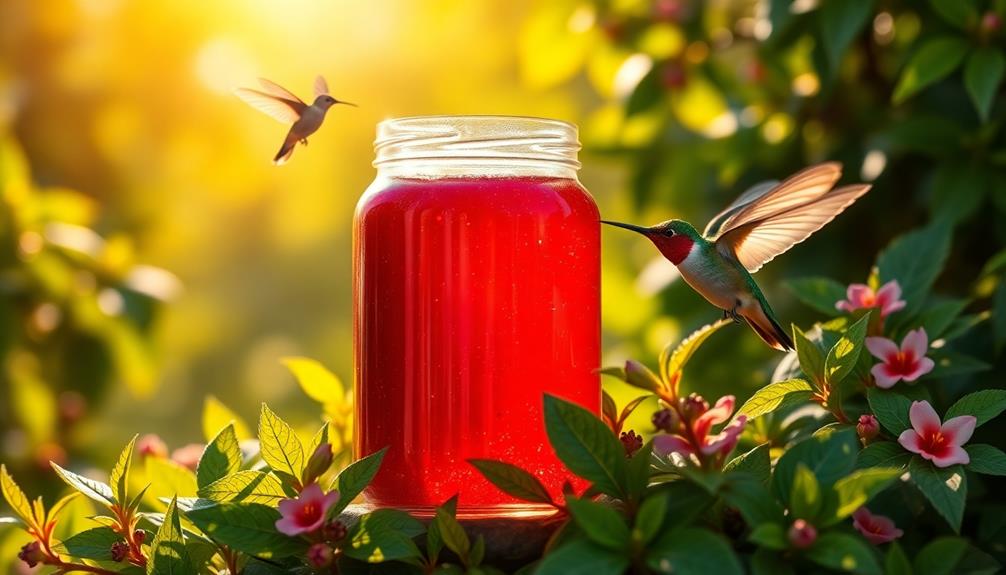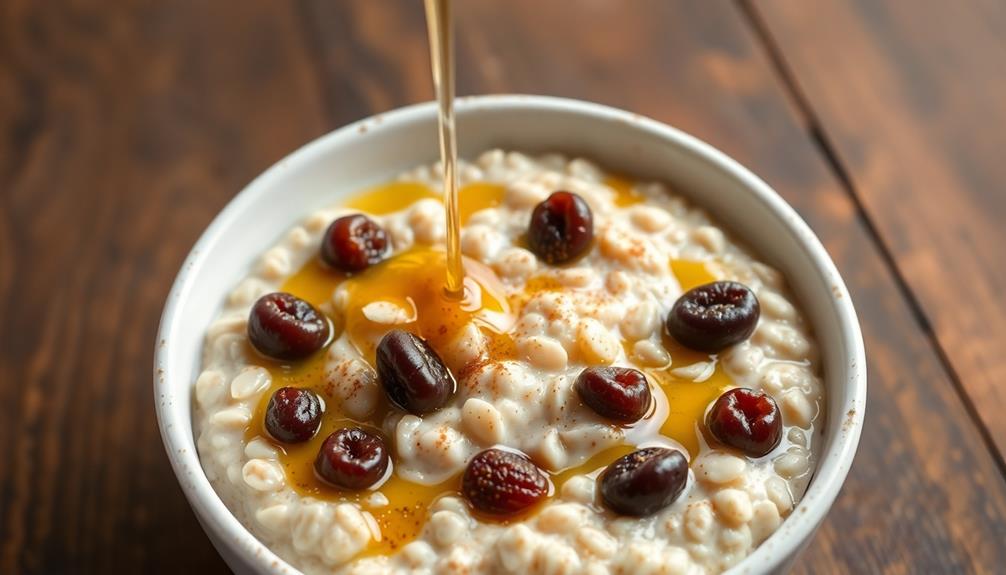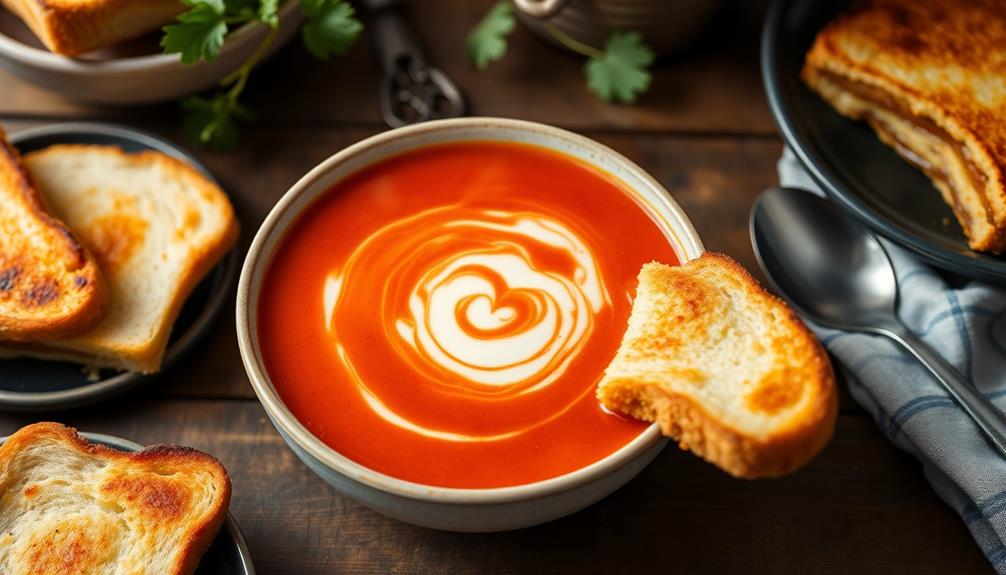Making your own hummingbird food is simple and ensures your feathered friends get the nourishment they need. Start by mixing 1 cup of white granulated sugar with 4 cups of water, then boil the solution for 2-3 minutes to dissolve the sugar and kill any impurities. Once cooled, pour the nectar into your hummingbird feeder using a non-metallic funnel. Be sure to avoid using honey, artificial sweeteners, or food coloring, as these can harm the birds. Clean your feeder every 3-5 days to prevent mold and keep the nectar fresh. With the right food and a hummingbird-friendly environment, you'll be rewarded with the chance to observe these incredible creatures up close.
Key Takeaways
- Make a simple sugar-water solution with a ratio of 1 part white sugar to 4 parts water, boil it for 2-3 minutes to dissolve the sugar.
- Allow the sugar-water mixture to cool completely before pouring it into hummingbird feeders using a non-metallic funnel.
- Store any unused nectar in a clean, airtight container in the refrigerator for up to one week.
- Avoid using honey, artificial sweeteners, or food coloring, as they can be harmful to hummingbirds.
- Clean hummingbird feeders every 3-5 days to prevent mold and fermentation, and ensure the nectar remains fresh.
History
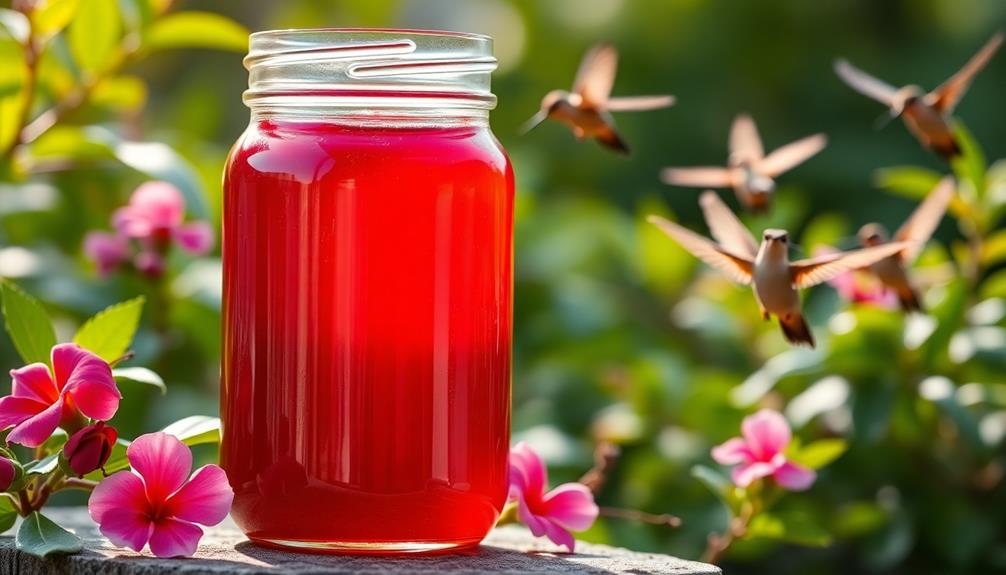
According to historical records, hummingbird food has been a part of human-hummingbird interactions for centuries. The earliest known accounts date back to the Aztec civilization, where the Nahua people would create sweet nectar solutions to attract these remarkable birds.
As European explorers ventured into the Americas, they, too, became fascinated by hummingbirds and began experimenting with various sugar-based recipes to feed them.
Over time, the art of making hummingbird food evolved, with people across the Americas and beyond discovering the perfect balance of sugar, water, and sometimes other ingredients to create a nutritious and appealing nectar.
Today, hummingbird feeding has become a beloved pastime, with millions of people around the world delighting in the opportunity to observe these tiny, iridescent creatures up close as they sip from carefully crafted feeders.
The history of hummingbird food is a testament to our enduring fascination with these remarkable birds.
Recipe

Hummingbirds are fascinating creatures that add a touch of whimsy to any garden. To attract these tiny, energetic birds, it's important to provide them with a nutritious food source. The following recipe for homemade hummingbird food is easy to prepare and will keep your feathered friends coming back.
The key to a successful hummingbird food recipe lies in striking the right balance between sugar and water. Hummingbirds have a high metabolism and require a steady supply of energy to fuel their incredible flight abilities. This simple syrup solution mimics the natural nectar they'd find in flowers.
- 1 cup white granulated sugar
- 4 cups water
In a medium saucepan, combine the sugar and water. Bring the mixture to a boil, stirring occasionally to dissolve the sugar completely. Once the solution has reached a boil, remove it from the heat and allow it to cool to room temperature. Once the sugar mixture has cooled, it can be used in various recipes, from cocktails to desserts, as a simple syrup. For a savory twist, consider incorporating it into a marinade for your favorite dishes, such as a crispy fried chicken recipe, to balance the flavors with a touch of sweetness. This will enhance the overall taste and bring out the perfect blend of sweet and savory in your meal.
Pour the hummingbird food into a clean, airtight container and store it in the refrigerator for up to one week.
It's important to note that you should never use honey, artificial sweeteners, or food coloring in your hummingbird food. Honey can contain botulism spores that are harmful to hummingbirds, and artificial additives are unnecessary and may even be detrimental to their health.
Stick to this simple sugar water recipe for the best results.
Cooking Steps
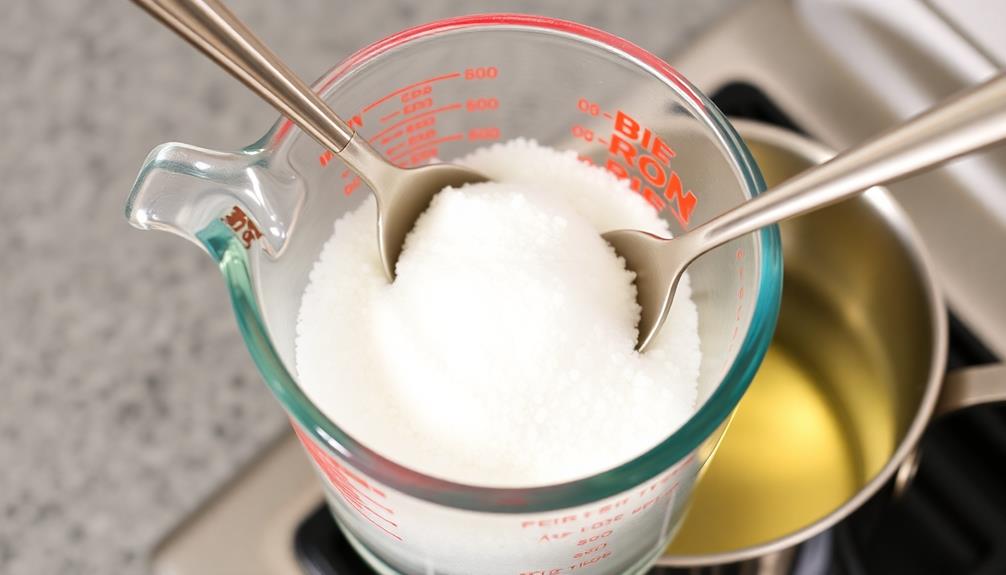
To begin, you'll need to gather some sugar and water.
Next, bring the mixture to a boil, stirring until the sugar fully dissolves.
Once the solution has cooled, you can pour it into your hummingbird feeders.
Step 1. Gather Sugar and Water

Gather your sugar and water. The key ingredients for making hummingbird food are simply white granulated sugar and water. Use a ratio of 1 part sugar to 4 parts water. For example, if you're making 1 cup of nectar, you'll need 1/4 cup of sugar and 1 cup of water.
Bring the water to a boil in a small saucepan. Once boiling, remove from heat and stir in the sugar until it's fully dissolved. Allow the mixture to cool completely before using. This simple syrup can be stored in an airtight container and refrigerated for up to a week, making it a handy ingredient for various recipes. If you’re curious about how to make brown sugar at home, you can replicate it by mixing granulated sugar with molasses for a rich, caramel-like flavor. Incorporating homemade ingredients like this adds a personal touch and enhances the depth of any dish or drink.
Refrigerate any leftover nectar in an airtight container for up to 1 week. It's important to avoid using honey, artificial sweeteners, or food coloring, as these can be harmful to hummingbirds. The simple sugar-water solution mimics the natural nectar they feed on.
Once cooled, the nectar is ready to be placed in your hummingbird feeder. Refill the feeder as needed to keep the hummingbirds coming back.
Step 2. Boil the Sugar-Water Mixture

Once you have the sugar and water ready, bring the mixture to a boil in a small saucepan. This step is crucial, as boiling the solution helps dissolve the sugar completely and ensures the proper concentration for feeding hummingbirds.
Bring the mixture to a full rolling boil, stirring occasionally, and let it continue to boil for about 2-3 minutes. This brief boiling time helps kill any potential bacteria or impurities in the water, making the nectar safe for hummingbirds to consume.
Be careful not to let the mixture boil for too long, as this can lead to a thicker, more syrupy consistency that may be difficult for hummingbirds to drink.
Once the 2-3 minutes are up, remove the saucepan from the heat and allow the sugar-water solution to cool completely before using or storing.
Step 3. Allow the Mixture to Cool
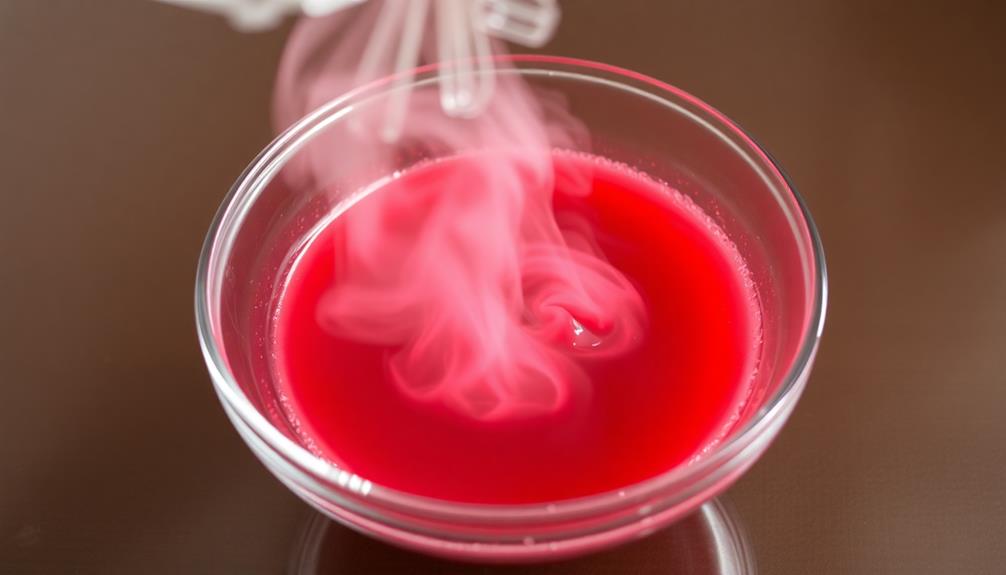
Allow the sugar-water solution to cool down completely before moving on to the next step. This is a crucial part of the process, as you don't want to add the hummingbird food to your feeder while it's still hot.
Letting the mixture cool ensures it won't damage the feeder or harm the delicate hummingbirds. Depending on the quantity you've made, this cooling period can take anywhere from 15 to 30 minutes.
You'll know the solution is ready when it's reached room temperature. To speed up the process, you can place the saucepan in a shallow bowl of cold water, stirring occasionally.
Avoid putting the hot liquid in the refrigerator, as this can cause it to thicken unevenly.
Once the sugar-water mix has cooled, you're ready to proceed to the next step – pouring it into your hummingbird feeder.
Remember to keep the feeder clean and the solution fresh to attract these fascinating little birds to your yard.
Step 4. Pour Into Feeders

Your cooled sugar-water solution is now ready to be poured into your hummingbird feeders. This is a crucial step, as properly filling the feeders ensures the nectar is accessible to your feathered friends.
Be sure to use a clean, non-metallic funnel to slowly and carefully pour the nectar into the feeder's reservoir. Avoid splashing or spilling, as this can attract unwanted insects and make a mess.
Once the feeder is full, check that the feeding ports are unobstructed, allowing hummingbirds easy access to the nectar. Secure the feeder's lid or cap tightly to prevent leaks.
Hang or place the feeder in a location that's shaded, away from direct sunlight, as this will help the nectar stay fresh longer.
Step 5. Hang the Feeders Securely
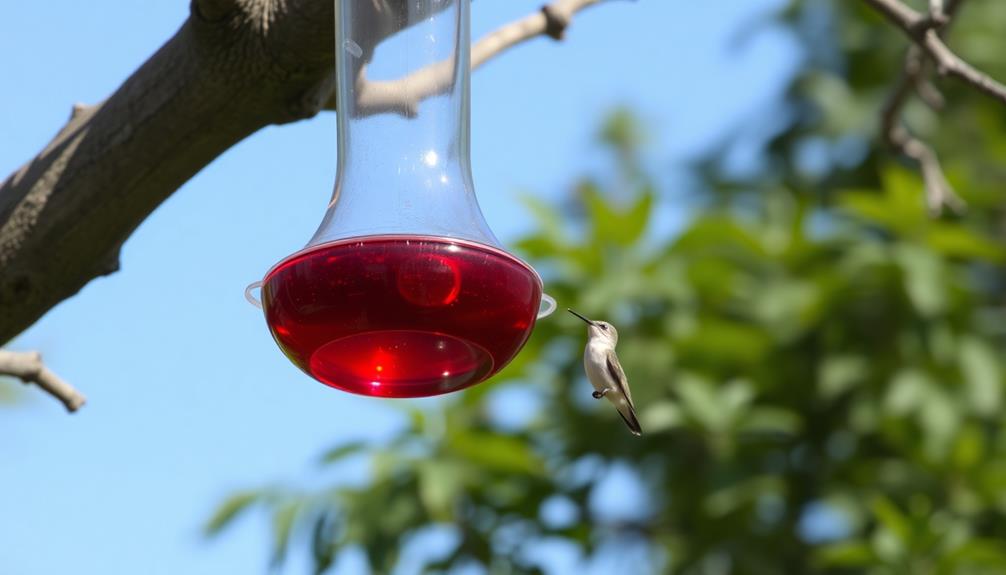
With your nectar ready, it's time to properly hang the hummingbird feeders. Choose a sturdy location that's out of direct sunlight and away from windows, as hummingbirds may accidentally fly into the glass.
Ideally, position the feeders near flowering plants or a window where you can easily observe the birds. Use a sturdy hook or hanger to suspend the feeder, ensuring it's at least 5 feet off the ground. This height deters cats and other predators from accessing the nectar.
Secure the feeder firmly, as hummingbirds are surprisingly strong and can dislodge a poorly hung one. Check the feeder periodically to make sure it remains level and the perches are accessible.
When hanging multiple feeders, space them at least 10-15 feet apart to avoid territorial disputes between the birds. This allows each hummingbird to feed comfortably without feeling threatened.
Remember to regularly clean and refill the feeders to keep the nectar fresh and enticing for your feathered visitors.
Final Thoughts

As you prepare to enjoy the vibrant presence of hummingbirds in your garden, remember that providing them with the right sustenance is crucial.
Now that you've made your homemade hummingbird nectar and securely hung your feeders, take a moment to reflect on the importance of your efforts.
Hummingbirds are fascinating creatures, and by taking the time to cater to their needs, you're not only delighting yourself but also contributing to the well-being of these remarkable birds.
Their rapid wing beats and iridescent plumage are a joy to behold, and your commitment to maintaining a reliable food source ensures they can thrive in your landscape.
Moving forward, continue to monitor your feeders, refilling them as needed and keeping them clean.
Observe the hummingbirds' behavior and take note of their preferences, as this will help you fine-tune your approach.
With your diligence and the right nourishment, you can look forward to many joyful encounters with these winged wonders in your own backyard.
Frequently Asked Questions
How Do I Attract Hummingbirds to My Garden?
To attract hummingbirds, you'll want to plant nectar-rich flowers, hang colorful feeders, and keep them well-stocked with a simple sugar-water solution. With a little effort, you can create a welcoming haven for these delightful little birds.
What Is the Best Time of Day to Feed Hummingbirds?
The best time to feed hummingbirds is in the early morning and late afternoon. This is when they're most active and need to replenish their energy after a long night or day of foraging.
Can I Use Food Coloring in the Hummingbird Nectar?
You can use food coloring in the hummingbird nectar, but it's not necessary. Hummingbirds are attracted to the color red, but the nectar's color won't affect its nutritional value. It's best to keep the mixture simple and natural.
How Long Can Hummingbird Nectar Be Stored?
You can store hummingbird nectar in the refrigerator for up to a week. Make sure to replace it if it gets cloudy or starts to grow mold. Keeping it fresh ensures your feathered friends get the best nutrition.
Can I Feed Hummingbirds All Year Round?
Yes, you can feed hummingbirds year-round. Hummingbirds need a constant supply of nectar and insect protein to fuel their high metabolism. Keep your feeder filled and clean to provide these essential nutrients throughout the year.
